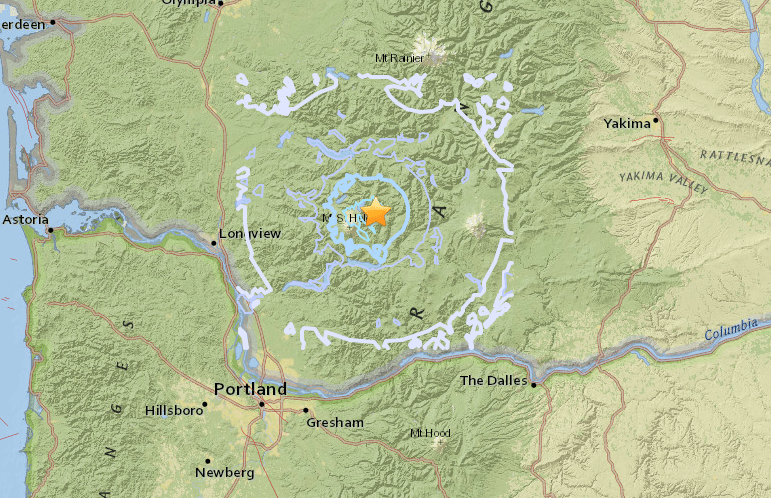At least 16 earthquakes rumbled the landscape about 7.5 miles northeast of Mount St. Helens very early Wednesday morning.
The largest earthquake, a magnitude 3.9, struck at 12:36 a.m., then was quickly followed by a series of at least 15 aftershocks of magnitude 2.7 or less which tapered off over the next several hours.
Scientists at the U.S. Geological Survey Cascades Volcano Observatory said the earthquakes show no signs of relation to the volcano. Instead they were most likely caused by stress and faulting in the earth’s crust around the area.
Liz Westby, a geologist at the Cascades Volcano Observatory, said earthquakes associated with Mount St. Helens’ magma system typically happen right around its crater and come in swarms, as opposed to the shock/aftershock type seen Wednesday morning.
“When magma or fluid moves we see swarms, even if they’re small. The swarms get our attention,” she said. “These main shocks/aftershocks are typically run of the mill and you see them in a variety of places.”
The earthquake struck just off National Forest Road 9403, not far from the Windy Ridge Interpretive Site. The road is currently closed, so no one should have been up there when the earthquake struck.
The USGS website’s “Did you feel it?” reporting system indicated that shaking was felt in Clark and Cowlitz counties, including in Ariel, Battle Ground, Camas, La Center, Vancouver, Shaking was also felt in Portland and as far north as Seattle, according to the USGS. More than 100 people filed reports.
The quake was the second largest immediately around the volcano since 1981. The largest to strike the area was a magnitude 4.2 at Johnston Ridge Observatory on Valentine’s Day 2011.






